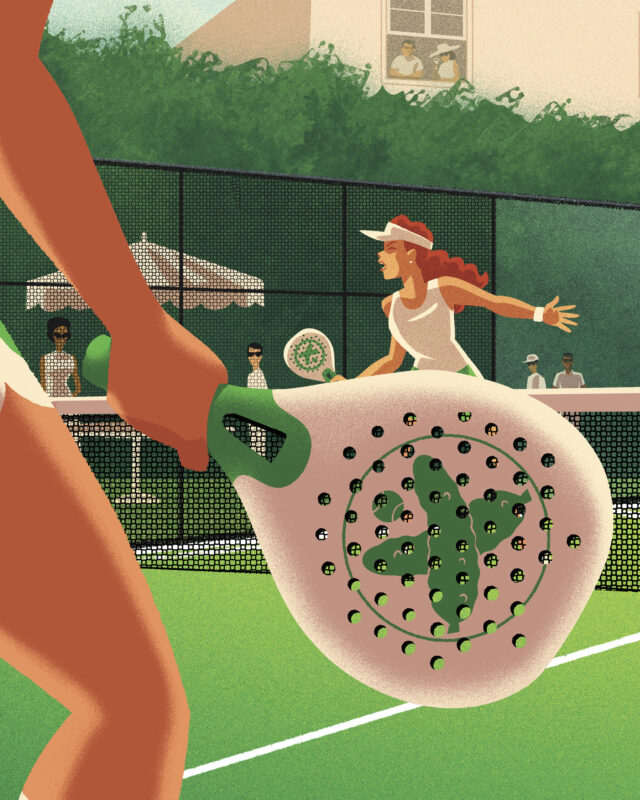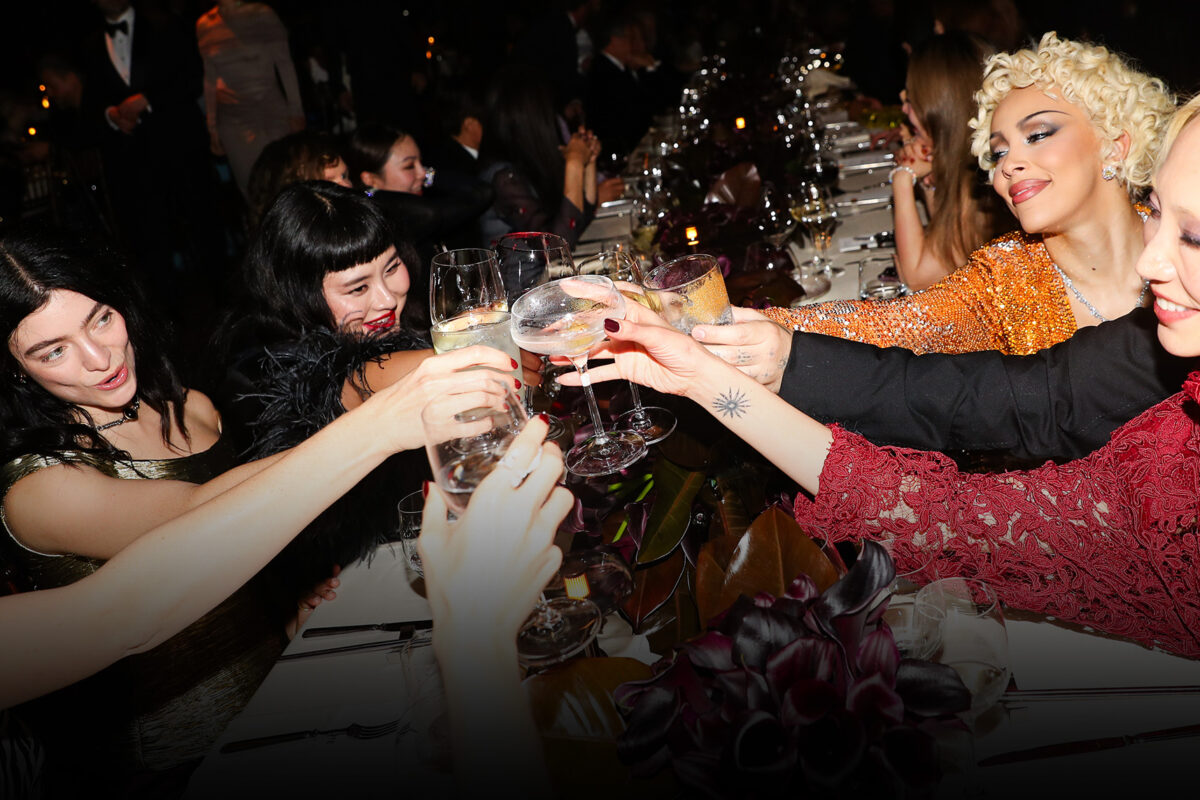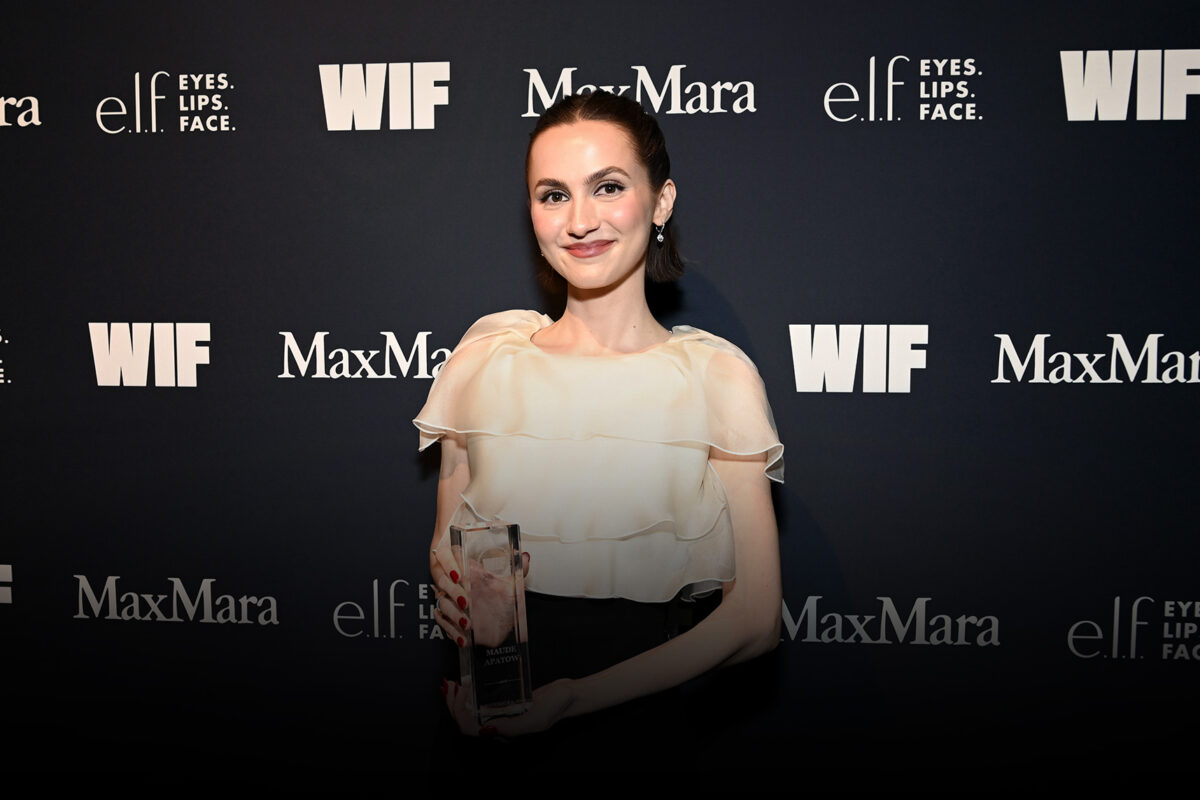How two rival racquet sports aced California at the same time
Words by ROB LeDONNE
Illustration by DEREK CHARM
Which sport has seen current men’s world number-one Carlos Alcaraz and former women’s number-one Venus Williams volleying to victory this year? Clue: it’s not tennis.
If you are unaware of the pickleball craze sweeping through California, where have you been? According to the Sports and Fitness Industry Association, the racquet sport can claim 36 million players globally and is growing 150 percent per year on average.
After the first national tournament was held in 2009, a pandemic-fueled surge has seen the Association for Pickleball Professionals throw its biggest-ever pickleball tournament in Newport Beach, wooing 1,400 players and an ESPN broadcast. In September, the internet star David Dobrik held a charity pickleball tournament that featured Taylor Lautner and Madison Pettis, and the Los Angeles Times ran a recent op-ed calling pickleball “the future of sports.”
“So many of my friends’ homes have courts, people are converting tennis courts, and out-of-business big-box retail spaces are turning into pickleball courts,” says Sabina Nathanson, founder of luxury athleisure line PQL Club. “I used to play pickup tennis, but a friend said, ‘You should try pickleball.’ I was instantly obsessed.”
In a deuce of sorts, fellow racket sport padel is right up there. Already a $2 billion-a-year industry and popular for decades in Spain and Latin America, it’s expected to triple in size by 2026. “I live, breathe, and eat padel,” says Elliott Carnello, who, alongside his father, Peter, is the CEO and founder of ACE Padel, which specializes in building padel courts and complexes. The company just received a rush of investor funding, with a Culver City facility opening in L.A. scheduled for next year.
No surprise that locals are cashing in on these twin paddle crazes, including Nathanson. “I started to look at clothes to wear [for pickleball],” she says. “But I realized everything was targeted toward traditional tennis players, which can feel dated.” She wants her line of sportswear and accessories “to feel chic and functional for people who take the sport as seriously as I do.”
The $2-billion-a-year padel industry is expected to triple in size by 2026
“What’s great about pickleball is that I can get the same high that I used to get playing tennis, without punishing all my joints,” says Ayda Field Williams, the CEO and founder of Ayda Active. Working alongside partner Laure Hériard Dubreuil, founder of The Webster, she launched a pickleball capsule collection earlier this year. “The rackets are smaller, the balls are lighter, and the fashion is way more fun,” she says. “You get a great sweat without having to commit to a three-hour game.”
Padel, or padel tennis, was created in 1969 by the Mexican businessman Enrique Corcuera. Its fiberglass padels are weightier than a pickleball paddle but still perforated, tennis balls are used, and the scoring system is also similar to tennis. Pickleball’s scoring is closer to squash, with a first to 11 framework in each game, plus the victor needing a two-point lead, and points can be won only on the serve. Pickleball can be played singles, but padel, strictly speaking, is played only as doubles.
Considering it has been in existence for more than 50 years, padel has been slower to catch on stateside, but a New York Times headline this year posed the question: “Is Everyone Playing Padel Without Us?” Carnello’s emergence as padel’s power player started with tennis. A former professional, he had an executive job offer from Red Bull fall through thanks to the pandemic. Around the same time, he noticed the business of padel booming in Sweden. “I started doing research on its growth and said, ‘This is crazy. Let’s see where it goes from here.’” With the US Padel Association predicting there could be 30,000 courts in the U.S. over the next decade, and only 180 recorded in 2022, that’s one grand slam of an opportunity.
Another reason for padel’s popularity is the smooth learning curve. “Padel has a smaller court and you have walls, so there are more moments for second chances,” says Carnello. “It’s easier to have a higher-level player play with a less experienced one.” Nathanson has similar thoughts about pickleball. “I can play with my 10-year-old son and have a really competitive game,” she says. “And I can also play with my dad.”
Nathanson has one guess as to why sports like pickleball and padel are sweeping the nation. “Typically tennis has felt a bit exclusive, but that’s not true for pickle or padel,” she says. “They’re inclusive, they’re social, and they encourage people to be part of a community. The obsession is real.”
This story originally appeared in the Fashionable Living 2023 issue of C Magazine.
Discover more STYLE news.
See the story in our digital edition





